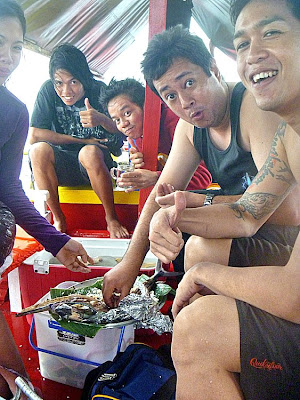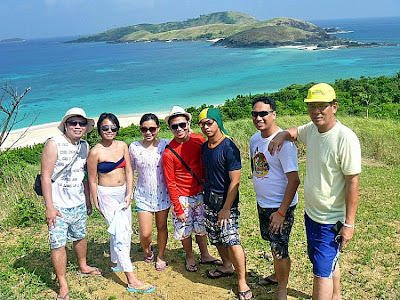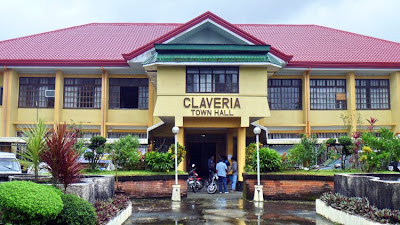On our third day in Aklan, my good friend Gil Bilog (my wife Grace’s first cousin on her mother’s side) and I had our breakfast at our usual hangout, Seaside Restaurant , Malay poblacion’s (town center) only full-service restaurant which is owned and operated by Ms. Myra Oczon (Grace’s niece) and her husband Dodoy. Both also work at the nearby Municipal Hall. As the name implies, the restaurant is located by the sea, along the poblacion’s clean, gray sand beach. At night, during supper, we could hear and feel the surf pounding the sea wall. Along the beach, we could see the lights along Boracay‘s long beach as well as faintly hear the sounds of its active nightlife.
 |
| Malay Poblacion Beach |
The native-style restaurant serves a number of Filipino dishes (including my favorite sisig and Gil’s favorite sinigang) and grilled dishes (fish, chicken, pork, squid, etc.) and also has picnic sheds for those who want the feel of the sea breeze as well as get a panoramic view of distant Boracay Island and its well-known white sand beach. There’s also a pension house with rooms with bath for transients.
 |
| Seaside Restaurant |
In the afternoon, I decided to tour Gil to the nearby town of Nabas to explore its Union Beach. For lunch, I drove the Mitsubishi Adventure the 6 kms., with Gil and Carl Flores (Grace’s first cousin on her father’s side), along the now completely concreted road, to Andok’s at Brgy. Caticlan’s Jetty Port. It was already starting to rain when we finished lunch and it remained so as I drove the 20 kms. along the scenic coastal highway to Nabas.
 |
| Union Beach Resort & Lodge |
Along the way, at the left of the highway, we had a stunning vista of unspolied white sand beaches, the likes of which were similar to Boracay before the advent of tourism. We made a stopover at Union Beach Resort & Lodge where we had hot coffee and a long chat at one of its elevated picnic huts. As it was the amihan season, the resort had set up screens to prevent wind-blown sand from bothering guests.
 |
| Gil, me and Carl along Union Beach |
During a break in the rain, we made our way through the opening in the screen to walk along the beautiful, palm fringed white sand beach. Boracay and its offshore islands can also be seen in the distance, northwest of the beach. At a nearby point of land, Carl pointed out a property owned by host and comedian Ariel Ureta. The resort also has small airconditioned rooms with bath and cable TV for those who want to stay longer in quiet surroundings.
 |
| Carl and Gil at Tabon Docking Area. Behind is Laurel Island |
It was again starting to rain when we left the resort. Driving back to Malay, we made a short stopover at the Tabon Docking Area where boats from Boracay drop off their guests when rough seas prevent their docking at Caticlan’s Jetty Port. The concrete docking area was now cracked in places and in dire need of repair. Across the port, we had a good view of the rocky, aptly named Crocodile Island, other offshore islands as well as Laurel Island and its white sand beaches.
 |
| Crocodile Island |
Before returning to Malay poblacion, we made another stopover at Nimya Flores-Thompson’s beautiful seaside house in Brgy. Motag. Ate Nimya, a long time Australian resident and citizen whose British husband Bill died some years ago (in fact, on November 1, All Saints’s Day), spends part of the year in her home in Malay. The house is protected from the sometimes raging sea by a concrete sea wall.
| Ate Nimya’s beachside house |
Nimya entertained us from her porch facing the clean gray sand beach and the sea. She also has a small separate cottage which she rents out to expats (it was then occupied). Nimya’s neighbors are also expats who married Filipinas. They also built beautiful homes in this equally beautiful seaside setting.
 |
| Brgy. Motag’s gray sand beach |
Union Beach Resort & Lodge: Brgy. Union, Nabas, Aklan. Mobile numbers (0949) 750-5177 and (0921) 762-7564.





























